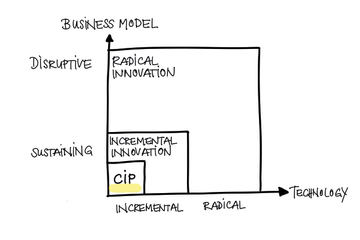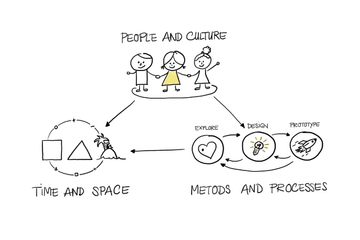Innovation in non-profit organisations
Should NGOs and NPOs be innovative? If so, how do you develop innovation in organisations whose intention is to provide a public service or even make the world a better place?

Why innovation in NPOs?
At first glance, non-profit organisations appear to operate in a non-competitive market. So why bother to be innovative? Actually, these organisations should be intrinsically motivated to develop their capacity for innovation because their mission is (usually) to improve people’s lives and protect the environment. NPOs should therefore constantly strive to question their solutions and look for ways to solve the problems in this world differently, better, faster and cheaper. Imagine, for example, if every franc donated could generate 4 times more impact than is the case today!
Forms of innovation
Irrespective of whether you aim to earn a lot of money with your business or are a non-profit, innovation can be defined as using new ideas to solve the challenges and problems of a defined target group radically better, faster and cheaper. Innovation does not always have to be radical but it clearly differs from a continuous improvement process (CIP). Innovation is not interested in optimising what is already known but tries to go in new, and often unknown, directions in order to find different, better solutions. Improving the comfort of contact lenses is CIP, whereas creating a procedure to eliminate your visual impairment is radical innovation.
What it takes to develop innovation in NPOs
Developing innovation competence in non-profit organisations does not differ greatly from the private sector; the main difference is that they have less money for expensive Inno-Labs, trips to Silicon Valley etc. This could be a bonus, because this kind of innovation is usually more expensive but not necessarily better. So, what does it take? In short: people, methods and space.
What does it take? In short: people, methods and space.
If non-profit organisations want to become innovative, they must take action at all levels. A single measure, like an ideas board, is of little use. It is important to train and enable employees to understand and apply innovation. Innovation methods, such as design thinking and lean startup, can be learned and should be systematically applied in projects. There are precisely defined innovation processes that can be used to test, develop and implement an idea as quickly as possible.
If you want to run a marathon but never have time to go jogging, it might be difficult to get to the finish line. The same is true of innovation: only by practicing it in your organisation on a day-to-day basis will it eventually happen on a larger scale. This means creating safe spaces for employees to try new ideas, experimenting and failing, without fear of reprimand.

But above all, the innovation mindset must be developed, and the entire management and corporate culture must be aligned with it. And this is exactly where all organisations have a hard time: Innovation is cool, but my boss’ chair is not being shaken. Agile cooperation is great, but we’d better not get rid of the many hierarchies. Make mistakes? Are you nuts? You must let go of the old ways, but you are rewarded with something new: employees and managers become more creative and efficient. Performance continuously increases because people enjoy their work. And above all, employees are aware that, together, they make a significant contribution to improving the world by constantly trying to solve real problems differently and better.


